Negative Space!
In the world of visual art, sometimes what you don’t draw is just as important as what you do. A negative space carving sketch is a powerful technique that flips the traditional approach to drawing on its head. Instead of outlining the subject itself, you define it by shading or outlining the space around it. This method not only sharpens your observational skills but also creates striking, high-contrast compositions that command attention.
In this post, we’ll explore how to use negative space carving sketches to elevate your artwork, improve your spatial awareness, and create bold visual impact with minimal lines.
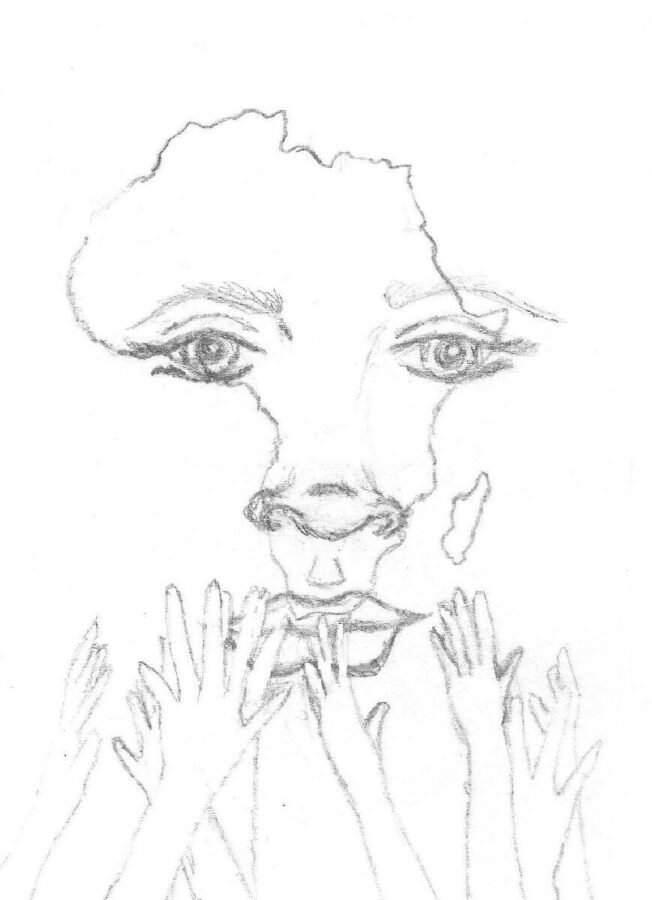
credit: THIN_DITZZZY
What Is a Negative Space Carving Sketch?
A negative space carving sketch is a drawing technique where the artist defines the subject by drawing the shapes and contours of the space around it—known as negative space—instead of the subject itself. The result is a silhouette or implied form that emerges from the surrounding shapes.
This approach is rooted in the principle that space defines form. By focusing on the background or surrounding areas, you allow the subject to “carve” itself out visually, often with dramatic clarity.
Sketchbooks.org | VISUAL RESEARCH HUB
Negative Space Carving Sketch Examples
Visual research is critical for any creative endeavor. We have compiled specialized links to lead you directly to images, videos, and inspiration for "Negative Space Carving Sketch Examples" across the web's best visual search platforms.
Why Use Negative Space in Your Sketchbook Practice?
Enhances Observation Skills
When you draw negative space, you’re forced to look at shapes differently. Instead of identifying objects, you’re identifying the voids between them. This shift in perception strengthens your ability to see proportion, alignment, and spatial relationships.
Improves Composition
Negative space is a key element of strong composition. It helps balance your artwork, creates breathing room, and guides the viewer’s eye. Practicing this technique trains you to use space intentionally.
Encourages Simplification
By focusing on the space around the subject, you naturally reduce visual clutter. This leads to cleaner, more impactful sketches that emphasize form and silhouette.
Builds Confidence with Contrast
Negative space carving often involves bold contrasts—light against dark, filled versus empty. This helps you develop a stronger sense of value and edge control.
How to Create a Negative Space Carving Sketch
Step 1: Choose a Simple Subject
Start with a subject that has a clear, recognizable shape—like a chair, plant, hand, or figure in profile. Avoid overly complex forms at first.
Step 2: Observe the Space Around the Subject
Instead of focusing on the object, look at the shapes that surround it. These might be the gaps between limbs, the air between leaves, or the space between objects on a table.
Step 3: Lightly Mark the Boundaries
Use a pencil to lightly outline the outer edges of the negative space. Don’t draw the subject—just the shapes around it.
Step 4: Fill in the Negative Space
Use a pen, marker, or dark pencil to shade or fill in the negative space. As you do, the subject will begin to emerge as untouched paper or lighter value.
Step 5: Refine the Edges
Clean up the contours to sharpen the silhouette. You can add contrast by darkening the background or softening edges for a more atmospheric effect.
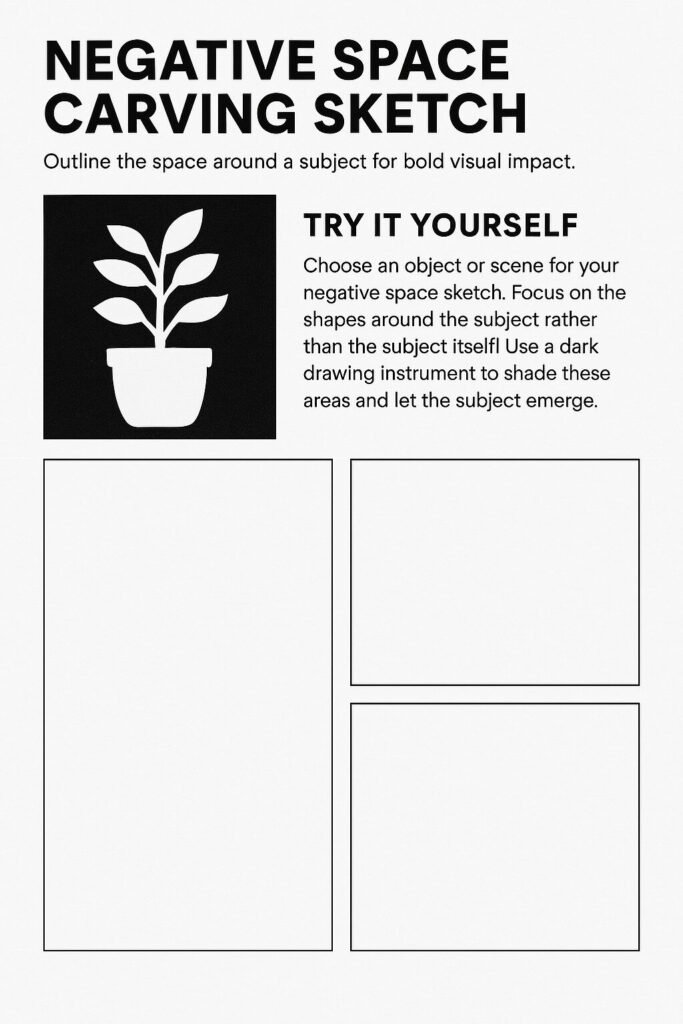
Tips for Better Negative Space Sketches
- Squint your eyes to simplify the scene and isolate shapes
- Use a viewfinder (a cut-out frame) to crop and focus on a specific area
- Practice with still life setups that have strong lighting and clear separation
- Try white-on-black by using white pencil or chalk on toned paper
- Layer multiple subjects to explore overlapping negative spaces
- Flip your sketchbook upside down to break object recognition and focus on shape
Creative Applications of Negative Space Carving
- Figure drawing: Capture dynamic poses by outlining the space between limbs
- Botanical sketches: Emphasize delicate stems and leaves by carving around them
- Urban sketching: Define buildings or street scenes by shading the sky or ground
- Abstract art: Use negative space to create tension, rhythm, and visual flow
- Logo and graphic design: Simplify complex ideas into bold, iconic forms

Sketchbooks.org | SUBJECT MATTER
Slice of Architecture | Sketch Challenge
What is the Slice of Architecture Concept? Exploring architecture through sketching is one of the most intuitive and inspiring ways to engage with the built world. The Slice of Architecture Sketch Challenge invites creatives to...
Frequently Asked Questions
What is a negative space carving sketch?
It’s a drawing technique where you define the subject by outlining and shading the space around it instead of the subject itself.
Why is negative space important in art?
It helps balance composition, improves spatial awareness, and creates strong visual contrast.
Can beginners try negative space sketching?
Absolutely—it’s a great way to train your eye and simplify complex subjects.
What tools are best for negative space sketches?
Use pencils, pens, markers, or even white chalk on toned paper for dramatic effect.
Should I draw the subject at all?
No, the goal is to let the subject emerge naturally by defining the space around it.
How do I find the negative space?
Look for the shapes between and around objects—these are often abstract and irregular.
Can I use this technique for figure drawing?
Yes, it’s especially useful for capturing poses and proportions quickly.
How often should I practice this?
Even 10–15 minutes a few times a week can sharpen your perception and drawing skills.
Final Thoughts
A negative space carving sketch is more than just a drawing exercise—it’s a mindset shift. By focusing on what’s around the subject, you train yourself to see the world in shapes, not labels. This approach builds stronger compositions, cleaner silhouettes, and a deeper understanding of form.
So next time you open your sketchbook, resist the urge to draw the object. Instead, carve it out of the space that surrounds it—and watch your subject come to life in bold, unexpected ways.
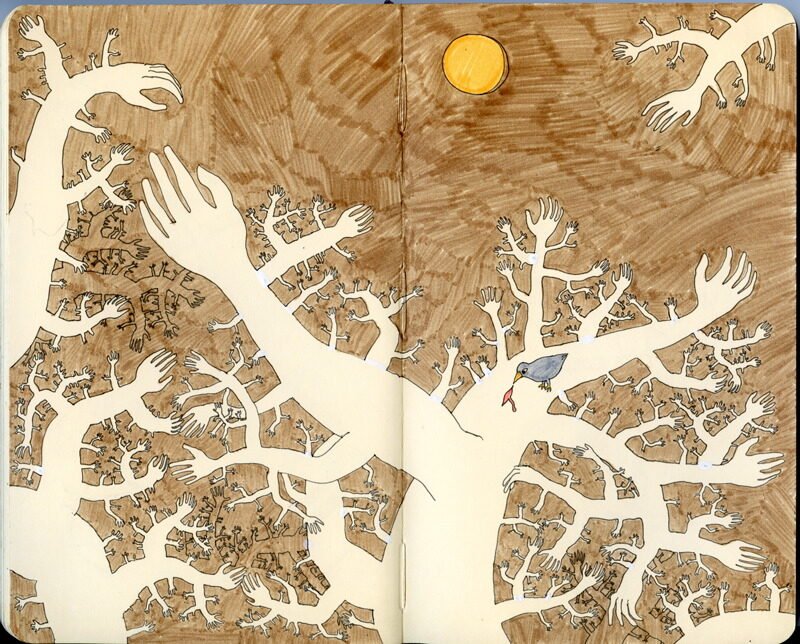
credit: MAGDA
Ready to Share Your Work?




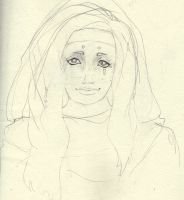
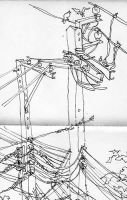
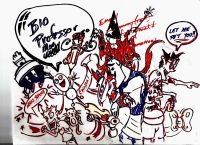



It’s cool when you can remember to mix this into a regular drawing, just pepper it around.